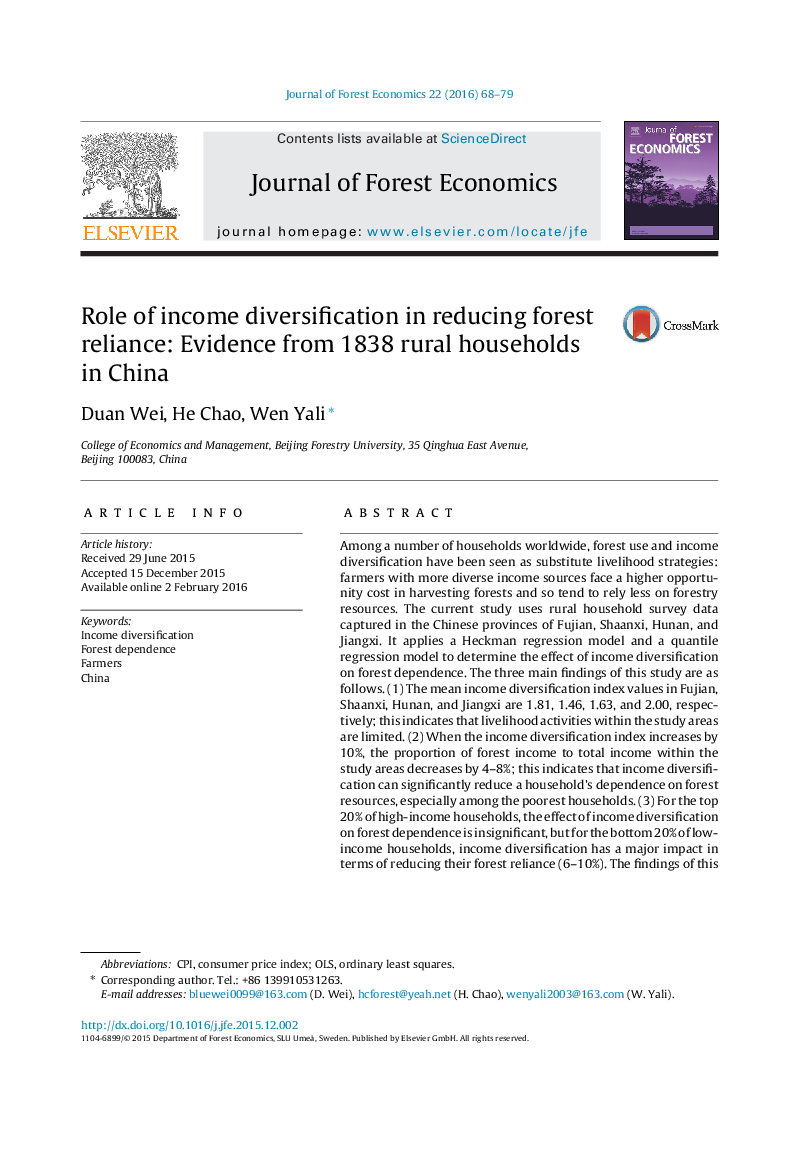| Article ID | Journal | Published Year | Pages | File Type |
|---|---|---|---|---|
| 92286 | Journal of Forest Economics | 2016 | 12 Pages |
Among a number of households worldwide, forest use and income diversification have been seen as substitute livelihood strategies: farmers with more diverse income sources face a higher opportunity cost in harvesting forests and so tend to rely less on forestry resources. The current study uses rural household survey data captured in the Chinese provinces of Fujian, Shaanxi, Hunan, and Jiangxi. It applies a Heckman regression model and a quantile regression model to determine the effect of income diversification on forest dependence. The three main findings of this study are as follows. (1) The mean income diversification index values in Fujian, Shaanxi, Hunan, and Jiangxi are 1.81, 1.46, 1.63, and 2.00, respectively; this indicates that livelihood activities within the study areas are limited. (2) When the income diversification index increases by 10%, the proportion of forest income to total income within the study areas decreases by 4–8%; this indicates that income diversification can significantly reduce a household's dependence on forest resources, especially among the poorest households. (3) For the top 20% of high-income households, the effect of income diversification on forest dependence is insignificant, but for the bottom 20% of low-income households, income diversification has a major impact in terms of reducing their forest reliance (6–10%). The findings of this study will help inform the design of alternative policies that could alleviate pressure relating to forest-resource protection.
